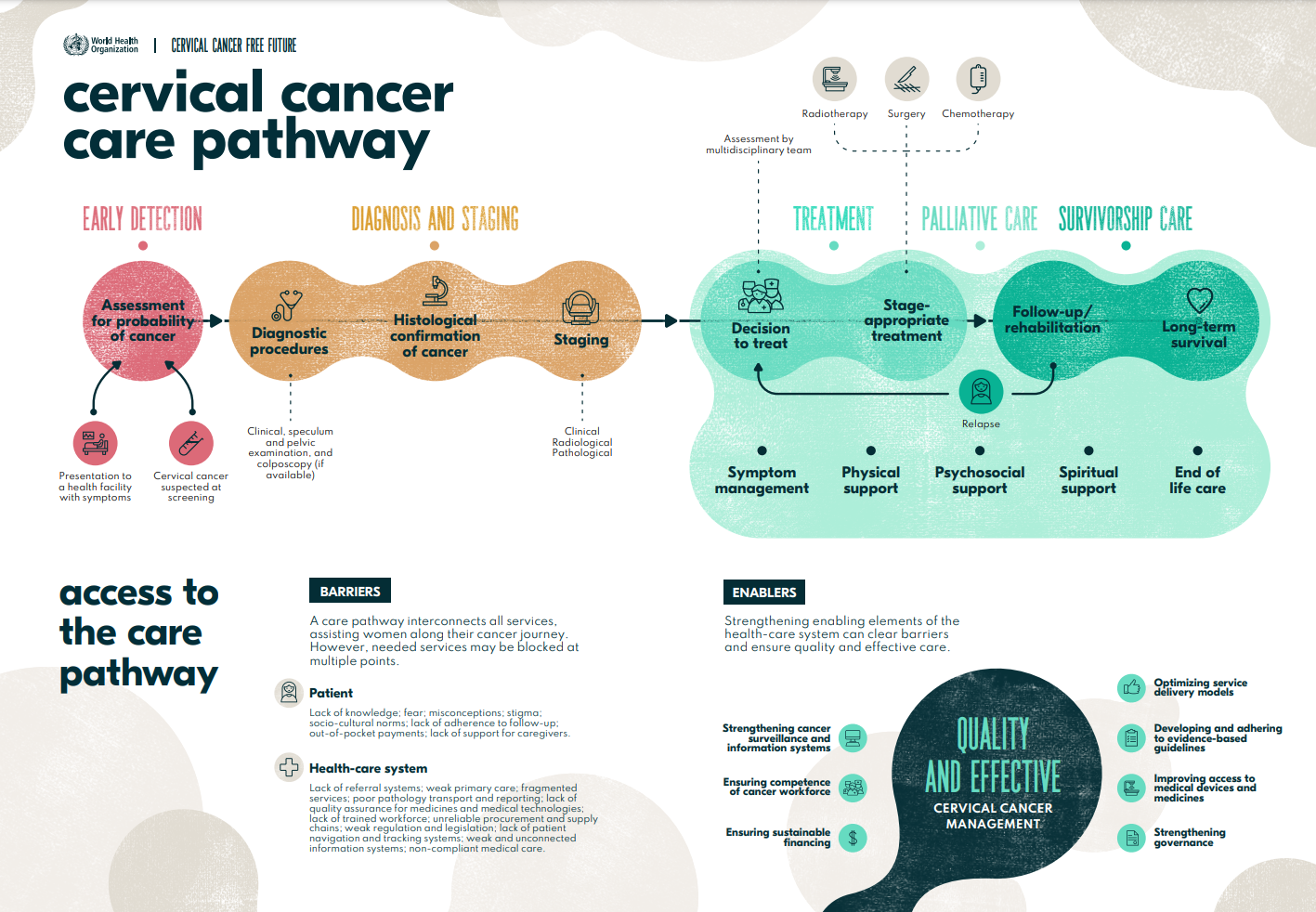February 4 - World Cancer Day
Cancer is a generic term for a large group of diseases that can affect any part of the body. Other terms used are malignant tumours and neoplasms. One defining feature of cancer is the rapid creation of abnormal cells that grow beyond their usual boundaries, and which can then invade adjoining parts of the body and spread to other organs.
The incidence of cancer rises dramatically with age, most likely due to a build-up of risks for specific cancers that increase with age. The overall risk accumulation is combined with the tendency for cellular repair mechanisms to be less effective as a person grows older.
Tobacco use, alcohol use, unhealthy diet, physical inactivity and air pollution are risk factors for cancer (and other noncommunicable diseases).
Between 30 and 50% of cancers can currently be prevented by avoiding risk factors and implementing existing evidence-based prevention strategies. The cancer burden can also be reduced through early detection of cancer and appropriate treatment and care of patients who develop cancer. Many cancers have a high chance of cure if diagnosed early and treated appropriately.
Cancer is a leading cause of death worldwide, accounting for nearly 10 million deaths in 2020.
The most common causes of cancer death in 2020 were:
- lung (1.80 million deaths);
- colon and rectum (935 000 deaths);
- liver (830 000 deaths);
- stomach (769 000 deaths); and
- breast (685 000 deaths).
Cancer is the second leading cause of death globally, accounting for an estimated 9.6 million deaths, or one in six deaths, in 2018. Lung, prostate, colorectal, stomach and liver cancer are the most common types of cancer in men, while breast, colorectal, lung, cervical and thyroid cancer are the most common among women. Each year, an estimated 400 000 children and adolescents of 0-19 years old develop cancer. The most common types of childhood cancers include leukemias, brain cancers, lymphomas and solid tumours, such as neuroblastoma and Wilms tumours.
The cancer burden continues to grow globally, exerting tremendous physical, emotional and financial strain on individuals, families, communities and health systems. Many health systems in low- and middle-income countries are least prepared to manage this burden, and large numbers of cancer patients globally do not have access to timely quality diagnosis and treatment. In countries where health systems are strong, survival rates of many types of cancers are improving thanks to accessible early detection, quality treatment and survivorship care.
EU policy on cancer
Europe’s Beating Cancer Plan, presented in February 2021, is the EU’s response to growing challenges and developments in cancer control and represents a political commitment to leave no stone unturned in the fight against cancer. Built around ten flagship initiatives, and several supporting actions, it forms part of the Commission’s proposals for a strong European Health Union with a view to ensuring a more secure, better-prepared and more resilient EU.

(Cervical cancer, WHO, 2020).
WHO guidlines:
https://apps.who.int/iris/handle/10665/279700
https://apps.who.int/iris/handle/10665/254500
http://apps.who.int/iris/bitstream/handle/10665/144785/9789241548953_eng.pdf?sequence=1
Newest WHO information:
https://www.who.int/news/item/13-12-2021-who-and-st.-jude-to-dramatically-increase-global-access-to-childhood-cancer-medicines
https://www.who.int/news/item/09-11-2021-who-discusses-approaches-to-strengthen-cancer-efforts-with-members-of-the-european-parliament
https://www.who.int/news/item/20-10-2021-who-launches-women-s-health-chatbot-with-messaging-on-breast-cancer
Useful links:
WHO Homepage
Union for International Cancer Control
The International Agency for Research on Cancer (IARC) publications



